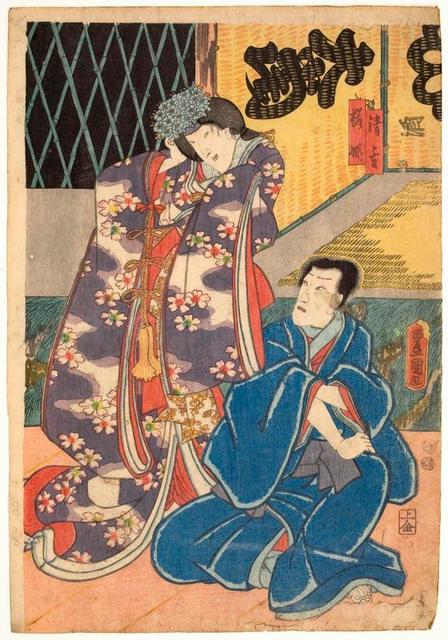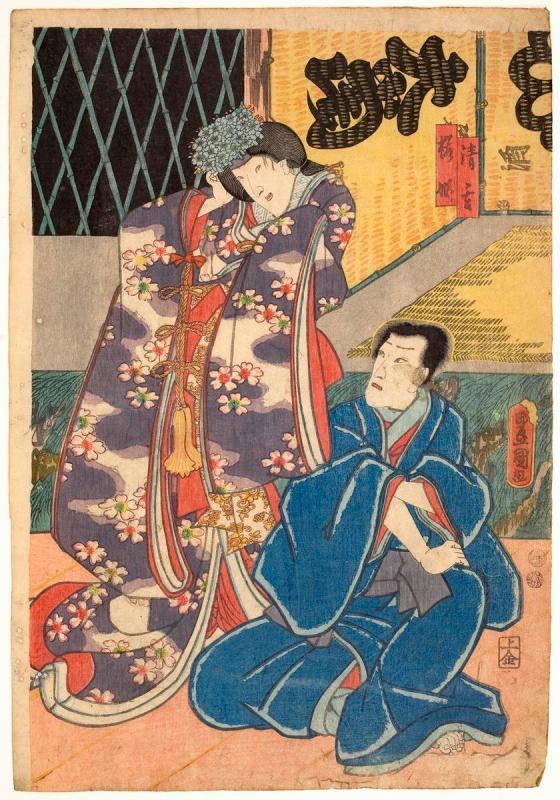The Onnagata Actor Iwai Kumesaburo III as Sakura-hime and the actor Ichikawa Danjuro VIII as Kiyomizu Seigen, Utagawa Kunisada

Full description
The Onnagata Actor Iwai Kumesaburo III as Sakura-hime (left) and the actor Ichikawa Danjuro VIII as Kiyomizu Seigen (right), Utagawa Kunisada, 1852, woodblock print, 36.8 x 25.3 cm
In Kabuki performances, onnagata would take on various female roles ranging from a princess, to a courtesan, or an old woman, breaking down a woman into fragments of movement, voice, and dress in order to make the male body smaller (Brandon, 123). Their costumes consist of brightly colored fabrics and elaborate patterns to add to a dramatic performance and emphasize the role of the female gender.
Woodblock prints of Kabuki acted as advertisements as well as influences on women as onnagata actors became idols, celebrities, and ultimately trendsetters (Shoaf). In this woodblock print, the onnagata Iwai Kumesaburo III acts as the Cherry Princess within a story of unrequited love and revenge. The flowy, draped fabrics, the dark purple, the sensual reds, cherry blossoms, tassels, and overall posture of the actor create an ultimate embodiment of femininity and royalty. Purple, banned by the Imperial Court, and the red, expensive, labor-intensive, glorify the character of the Cherry Princess as the desirable yet unattainable love interest blossoming into love and youthful beauty with the springtime cherry blossoms (Shively, 132). The shoulders pushed back, the tilt of the head, smirk, and twisted torso add to a slender and dainty figure.
The exaggerated portrayal of the female gender through ornate fashion emphasizes typical gender expressions that portray women as elegant beings to be admired. In some ways, the expressions of gender through fashion often define a woman by her social status or her proximity to men, whether she is sexually desired or a well-rounded woman fit for marriage.
Comments
to view and add comments.
Annotations
No one has annotated a text with this resource yet.
- typeImage
- created on
- file formatjpeg
- file size109 kB


